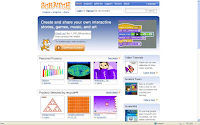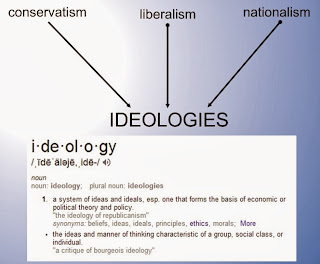Tearing Down the Walls at BLC10 Day 1
The theme of the Building Learning Communities 2010 conference from November Learning seems to be:
Four different presenters followed this same theme. Here are my reviews of their workshops throughout the day.

How Did I Learn to Tear Down the Walls of my Classroom Today at BLC10?
TEAR DOWN THE WALLS OF YOUR CLASSROOM
Four different presenters followed this same theme. Here are my reviews of their workshops throughout the day.
Create and Share Video Games!
Today's keynote speaker, Dr. Mitchel Resnick, demonstrated Scratch, program from MIT that allows users to create cards, posters, animations, video games, and lots more. They can then share their creations on the Scratch website and encourage others to build on, or remix, their work. Most of the work on Scratch was created by kids, like this one about a girl who hates alarm clocks. Dr. Resnick's biggest message was that taking what others create and then making something new out of it or even contributing to it causes a new kind of learning. Not only are children creative when they remix, they are collaborative. Click here for his paper on Scratch and how it fosters learning.
"The Smartest Person in the Room is the Room"
In the first breakout session I attended, Dean Shareski (see @shareski on Twitter) talked about what do to when you, the teacher, are "not the smartest person on in the room." He suggests making the room the smartest person in the room. It may sound like tricky word-play, but really it is about teaching your students that they become smarter by learning from each other. It isn't about who is the smartest person in the room, it's about learning from the expertise that each of us has to become smarter collectively. What I liked most about Mr. Shareski's presentation was that he practiced as he preached while he was preaching! Participants posted on Wallwisher about their favorite teachers, sent in pictures of weather from all over the world to Flickr, and watched while others participated via Twitter (see #blc10weather).
DO Something With Primary Sources
After lunch, the next breakout session I attended was from Stephanie Greenhut at the National Archives. She showed us Docsteach.org where teachers can create or use premade activities with questions and tasks based on primary sources. These can all be gathered in online "classrooms" like this one. What I love about this is that students to do the reading and analysis part at home, and then we can talk about their individual impressions and make connections with each other in a live class discussion the next day. Another way to extend the classroom to resources outside of our four walls.
Tear Up the Textbook
Textbooks are not bad, but they present information chronologically. Teachers can follow that path, or create their own. This is the idea Thomas Daccord (see @thomasdaccord on Twitter) puts forth. You can look at his Prezi presentation below. Some of the questions he asked of hte students in his American history class were:- To what extent is American the land of opportunity?
- What is the proper role of government in the lives of Americans?
- What is America's place in the world?
- What is the role of race in American history?
Mr. Daccord argues that this thematic, rather than chronological approach, gives the course more purpose and the students are more invested on the goals of the course. Students learn about history through these essential questions and learn to research effectively through their investigations.
How Did I Learn to Tear Down the Walls of my Classroom Today at BLC10?
- Let kids create and publish to demonstrate what they learned.
- Show kids that we are all smarter collectively than any individual could ever be on his/her own.
- Bring in activities and documents created by other expert educators all around the world.
- Don't limit curriculum to the textbooks or other resources purchased by the school... create your own.
I can't wait for tomorrow!


.jpg)
Thanks for all the info. I like Wallwisher too. Scratch will be the second unit in my Intro to Programming course this fall...Problem Solving will be the first unit...maybe in the wrong order but I have to start somewhere!
ReplyDeletenice summary. My brain was full today as well. I worry thought that attendees are in the 1% minority and that we ned more help changing school cultures
ReplyDelete